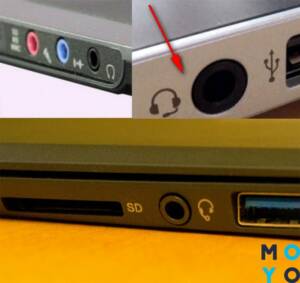Step 1: Prepare your laptop and router
The first step required to connect a laptop to a router is to prepare both devices. First, make sure your laptop has a built-in Wi-Fi module. If you don't have one, you can use an external Wi-Fi adapter. After this, make sure your router is turned on and in working order. To do this, check that all indicators on the router are green. Also, before connecting your laptop to the router, you need to make sure that you know the name and password of the Wi-Fi network. Usually this information is located on a sticker on the router itself or in its documentation. Once you have verified that both devices are ready, you can begin connecting your laptop to the router.
Checking the presence of a Wi-Fi adapter
Before connecting your laptop to the router, you need to make sure that you have a Wi-Fi adapter on your computer. Some laptop models have a built-in Wi-Fi module, while others require additional installation.
To check the presence of a Wi-Fi adapter on your laptop, you need to open “Device Management” on Windows. In the list of devices you should find the “Network adapters” section. If there is a “Wi-Fi adapter” in this section, then it is already installed. If it is not there, you need to buy and install additional equipment.
Checking for a Wi-Fi adapter is the first step to successfully connecting your laptop to your router. If you don't have an adapter, you need to purchase and install it to gain access to the wireless network.
Connecting the router to power and the Internet
In order to connect a laptop to a router, you must first connect the router itself to power and the Internet. To do this, follow the instructions that usually come with the router.
1. Connect the router to an electrical outlet using the power cable.
2. Connect the Ethernet cable from your ISP to the connector on the back of the router.
3. Connect the other end of the Ethernet cable to your ISP modem.
4. Connect an Ethernet cable from one of the LAN ports on the back of the router to the Ethernet port on your laptop.
5. Turn on your laptop and make sure it is connected to the router. You can test your connection by opening your web browser and going to any website.
Now you can enjoy the Internet on your laptop using a connected router. If you have problems connecting, you can refer to the router's instruction manual or contact the technical support of your Internet provider.
Connecting a laptop to a router via Wi-Fi is one of the easiest ways to access the Internet. This method allows you to connect to the Internet without wires or cables, making it more convenient to use.
In order to connect a laptop to a router via Wi-Fi, you need to follow a few simple steps:
- Make sure your laptop supports Wi-Fi. If not, then you need to purchase a Wi-Fi adapter.
- Turn on Wi-Fi on your laptop. This is usually done through a special button or key combination on the keyboard.
- Find the Wi-Fi network you want to connect to in the list of available networks.
- Enter a password if required.
- Wait for the laptop to establish a connection with the router.
Once the laptop is connected to the router, you can use the Internet without any problems.
Additionally, if you wish, you can configure additional connection settings such as IP address and DNS server. To do this, you need to go to the network settings on your laptop and configure the connection according to your needs.
Search for available Wi-Fi networks
In order to connect your laptop to the router, you need to find an available Wi-Fi network. In most cases, the laptop automatically connects to the closest and strongest Wi-Fi network. However, if you are in the coverage area of several Wi-Fi networks, you need to select the one you need.
To search for available Wi-Fi networks on your laptop, you need to open the Wi-Fi control panel. This can be done by clicking on the Wi-Fi icon in the bottom right corner of the screen. After this, a list of available Wi-Fi networks will open.
Select the desired Wi-Fi network and click on the “Connect” button. If the network is protected by a password, you will be required to enter it to connect to the network.
If the Wi-Fi network you need is not in the list, try updating the list of Wi-Fi networks by clicking the “Refresh” button. If this doesn't help, it's possible that the Wi-Fi network isn't in range or isn't available in your area.
After successfully connecting to the Wi-Fi network, you will be able to use the Internet on your laptop. If you want to connect another device to the network, you must repeat the procedure for each device.
Entering a password and connecting to the network
Once you have found your Wi-Fi network and selected it, you must enter the password. Usually the password is located on the router itself or on a special card with instructions that you received upon purchase. Enter your password and click the 'Connect' button.
If the password is entered correctly, your laptop will connect to the network. If an error occurs, try entering the password again or contact a specialist for help.
After successful connection, you can start using the Internet. If you plan to use your laptop outside the home, be sure to disconnect from the Wi-Fi network so as not to waste your data.
By following these simple instructions, you can easily connect your laptop to your router and enjoy fast internet at any time.
To connect your laptop to your router via an Ethernet cable, you need to follow several steps. First you need to make sure that you have an Ethernet cable and a free port on your router. Then you should connect one end of the cable to the port on the laptop and the other to a free port on the router.
After this, you need to make sure that the connection occurred correctly. To do this, you can check the connection in the network settings on your laptop. If everything is done correctly, the connection should appear in the list of available networks and you will be able to use the Internet on your laptop.
Thus, connecting a laptop to a router via an Ethernet cable is a simple and reliable way to get high-speed Internet on your device.
Connecting the cable to a laptop and router
To connect your laptop to the router, you must use an Ethernet cable. It allows you to transfer data between devices over a wired network.
To connect the cable to your laptop, locate the Ethernet connector on the back of the device. It usually has an icon with two arrows pointing in different directions. Insert the cable into the connector and make sure it is securely fastened.
Next, locate the Ethernet connector on the router. It also has an icon with two arrows. Insert the other end of the cable into this connector.
Once the cable is connected to both devices, you can set up a network connection. To do this, go to the network settings on your laptop and select a wired network connection.
If everything is done correctly, the laptop should successfully connect to the router and access the Internet.
Remember that the Ethernet cable has a limited length. Typically it should not exceed 100 meters. If you need to connect devices over a long distance, it is recommended to use a wireless Wi-Fi connection.
Configuring network settings on a laptop
To connect a laptop to a router, you need to configure the network settings on the device. There are several ways this can be done.
1. Using automatic setup. In this case, the laptop automatically receives an IP address and other necessary parameters from the router. To do this, select the 'Auto-detect parameters' option in the network settings.
2. Manual configuration of network parameters. If you want to configure the settings manually, you need to know the following information: laptop IP address, subnet mask, gateway IP address and DNS server address. All this data can be obtained from your Internet service provider.
3. Use of special programs. There are programs that automatically configure network settings on a laptop. For example, programs such as NetSetMan and IP Changer.
The setup method you choose depends on your needs and level of computer experience. Regardless of the method you choose, be sure to save your settings after you change them.
Read further:






